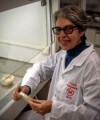Actualidad
Enhancing Food Safety Through Genetic Advances in Lettuce
Identification and Characterization of Lettuce Cultivars with High Inhibitory Activity Against the Human Pathogen Escherichia coli O157:H7. A Plant Intrinsic Defense Approach to Food Safety
Human enteric pathogens have the ability to survive in the plant habitat and pose a significant challenge to horticulture. Outbreaks of enteric diseases associated with the consumption of fruits and vegetables have become more predominant than diseases associated with animal-derived food products and continue to strain public health and food safety systems with a major impact on the agricultural industry.
The United States Food and Drug Administration (FDA) and the European Food Safety Authority (EFSA) recognize the public health risk posed by outbreaks of pathogenic Escherichia coli associated with agricultural produce. Analyses have shown that pathogenic E. coli and leafy greens pose a high risk.
Particularly concerning is the recurrence of Shiga toxin-producing Escherichia coli (STEC) outbreaks, the causative agent of hemolytic uremic syndrome (HUS), associated with lettuce despite intense efforts to control crop contamination with pathogens.
Plant Breeding to Enhance Food Safety
Therefore, STEC and lettuce have been approached with a new focus on enhancing product safety: investigating plant breeding as a strategy to prevent and mitigate crop contamination.
Plants can mount a defense response against a wide range of pathogens and insect pests through basal immunity. These responses are governed by complex and interconnected pathways regulated by signaling molecules such as ethylene, salicylic acid, and jasmonic acid.
Activation of these pathways leads to changes in the plant cell wall along with the production of enzymes and compounds that together provide defense against invading organisms.
There is increasing evidence that plants can also recognize and respond to the presence of human enteric pathogens, resulting in stomatal closure, increased expression of pathogen-related genes, burst of reactive oxygen species (ROS), and modifications of the cell wall.
Ability to Block Colonization by Human Pathogens
It is known that these defense responses to human pathogens vary depending on the plant cultivar, supporting the use of plant genetics as a new tool in preventing foodborne illness outbreaks, in this case, associated with lettuce.
Of particular interest for safety are the differences between cultivars in their ability to block epiphytic and endophytic colonization by human pathogens.
Lettuce has been implicated in recurrent outbreaks of STEC infection. The plant's defense response to mechanical damage, including insect herbivory, and basal immunity to plant necrotrophic pathogens are largely regulated through the jasmonic acid signaling pathway.
Activation of this pathway following injury triggers plant defenses such as lignification and deposition of callose at the wound site, and the production of proteinase enzymes, ROS, and phenolic and polyphenolic compounds, some of which are known to antagonize human pathogens.
These diverse phenolic compounds are generated through the phenylpropanoid pathway by transforming phenylalanine into hydroxycinnamic acids via the enzyme phenylalanine ammonia-lyase. Wounding induces the expression of this enzyme, leading to the production of anthocyanins and flavonoids.
After injury, loss of cell wall integrity generates an oxidative burst due to an influx of oxygen into damaged cells, producing ROS. Polyphenol oxidase and peroxidase enzymes, which are also part of the phenylpropanoid pathway, additionally generate ROS during oxidative browning. In particular, cell wall peroxidases generate ROS in response to pathogen attack and contribute to the apoplastic oxidative burst during wound healing.
The oxidation of phenolic compounds by polyphenol oxidase enzyme leads to the generation of quinones. Quinones participate in redox cycles, resulting in increased ROS generation. Together, the production of these species and the activity of polyphenol oxidase and peroxidase enzymes are useful markers for assessing the strength of the wound response in plants.
Phenolic Compounds Decreasing Human Pathogen Population
Recently, the survival of serovar O157 (EcO157) of STEC was evaluated under cold storage conditions of intact and cut leaves from various lettuce cultivars (Lactuca spp.). Cultivars were previously classified based on phenotypes such as resistance to other phytopathogens and physiological traits.
Phenolic compounds such as total anthocyanins and ROS in leaves were determined, and the activity of phenylalanine lyase, peroxidase, and polyphenol oxidase in each cultivar was quantified. A decrease in the population of EcO157 of up to 42 times was observed in stored cut leaves, relative to intact leaves stored under cold conditions.
High activity of phenylalanine ammonia-lyase and peroxidase enzymes, and content of phenolics and anthocyanins, were associated with a high decrease in the population of EcO157.
Plant basal immunity and pathways associated with a strong wound response can inform on the survival of enteric pathogens in processed postharvest lettuce. The related traits identified in this study can be used to generate new genotypes with inherently improved microbial safety.
Source
George, A. S.; Simko, I.; Brandl, M. T. (2024). Identification and characterization of lettuce cultivars with high inhibitory activity against the human pathogen Escherichia coli O157:H7: Toward a plant-intrinsic hurdle approach to microbial safety. Postharvest Biology and Technology, 211:112816.
Image Source: https://dfinnova.com/2022/08/05/la-lechuga-el-imprescindible-del-huerto/ Accessed on 22/05/2024.













